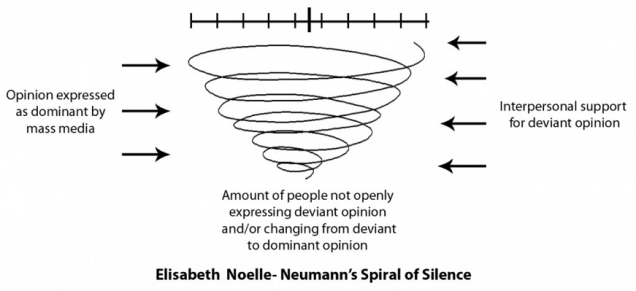It is a pervasive phenomenon that nowadays people use various technological tools such as TV sets, laptops and mobile phones, to engage with media and political content. Chadwick et al defined dual screening as “the bundle of practices that involves integrating and switching across and between, live broadcast media and social media” (Vaccari, Chadwick, & O’Loughlin, 2015), which is now a routine for many citizens during important political media events.
 (Retrieved from https://lkyspp.nus.edu.sg/gia/infographic/the-rise-of-social-media-in-political-participation)
(Retrieved from https://lkyspp.nus.edu.sg/gia/infographic/the-rise-of-social-media-in-political-participation)
There is plenty of research looking into the relationship between dual-screening and political participation. In the study on the dual screening of UK party leader debates that were broadcast on radio and TV during the European Parliament elections in 2014, researchers find that political engagement is strongly associated with some of the practices of dual screening around the debates, especially those involving users’ activity contributing to conversations (Chadwick, O’Loughlin & Vaccari, 2017). Bundles of “lean-forward” practices involving commentary and conversation have the strongest and most consistent associations with political engagement while bundles of relatively passive, “lean-back” practices have no effects on political engagement (Chadwick, O’Loughlin & Vaccari, 2017). Moreover, the result indicates that dual screening has some positive influences on individuals’ sense of political agency and both their short- and longer-term engagement with an election campaign (Chadwick, O’Loughlin & Vaccari, 2017). Gil de Zuniga & Liu’s finding also reveals dual-screening’s impact on people’s political participation: “higher level of the dual screen uses also reported higher levels of political expression in social media and online and offline participation” (Gil de Zuniga & Liu, 2017). Groshek & Krongard research how streaming television related to online and offline political participation. They find that more regular use of SNS for personalized political information increase online and offline political participation (Groshek & Krongard, 2016). Overall, all of the researches above show the positive role of social media on citizens’ political participation.
However, there are opposite opinions on the influence of social media on political participation. According to a report “Social Media and the Spiral of silence,” social media such as Twitter and Facebook has the adverse effect on the diversity of opinion and debate about public affairs (Hampton et al, 2014). The findings indicate that in the Snowden case, social media did not provide new forums for those who might otherwise remain silent to express their opinions and debate issues. Further, if people thought their friends and followers in social media disagreed with them, they were less likely to say they would state their views on the Snowden-NSA story online and in other contexts, such as gatherings of friends, neighbors, or co-workers (Hampton et al, 2014).

(Retrieved from https://www.communicationtheory.org/the-spiral-of-silence-theory/ )
This research is based on the theory of the spiral of silence originally proposed by German political scientist Elisabeth Noelle-Neumann in 1974, which is meant to refer to the tendency that people are less likely to express their views If they believe they might be different from those of their friends, family, and colleagues. Researchers also mentioned that internet has deepened the divide. As the internet companies build the algorithms to show users more content from people who are similar to us, it makes it easy for people to read only news and opinions from people they agree with workers (Hampton et al, 2014). Even though the authors stated that their study is limited in scope and doesn’t necessarily represent the whole group of Americans, the study did provide some insights into the role of social media towards political participation.
From my personal perspective, since social media has become a prevalent way for political participation, living in this era, I can definitely feel the power of social media on civic engagement. Take the “Me Too” movement and “BlackLivesMatter” hashtag movement as an example, they both many people’s attention to the role of social media in the discussion of public affairs. Citizens use social media to get information about political campaigns, express their opinions, involve in political debate, and try to influence other online users. Even though according to the theory of the spiral of silence, to some degree, social media might decrease citizens’ willing of expressing their political opinions, social media’s value for shaping public opinion and political participation is still indisputable.
Reference:
1.https://lkyspp.nus.edu.sg/gia/infographic/the-rise-of-social-media-in-political-participation
2.https://www.communicationtheory.org/the-spiral-of-silence-theory/
3. Andrew Chadwick, Ben O’Loughlin, and Cristian Vaccari. (2017, Oct 11). “Why People Dual Screen Political Debates and Why It Matters for Democratic Engagement.” Journal of Broadcasting & Electronic Media 61(2), 2017, pp. 220–239
4. Homero Gil de Zúñiga and James H. Liu. (2017, Apr). “Second Screening Politics in the Social Media Sphere: Advancing Research on Dual Screen Use in Political Communication with…” Journal of Broadcasting & Electronic Media 61(2), 2017, pp.193-219
5. Jacob Groshek * and Sarah Krongard. (2016, Oct 11). “Netflix and Engage? Implications for Streaming Television on Political Participation during the 2016 US Presidential Campaign.” Soc. Sci. 2016, 5, 65
6. Keith Hampton, Lee Rainie, Weixu Lu, Maria Dwyer, Inyoung Shin, and Kristen Purcell. (2014, Aug 26) “Social Media and the ‘Spiral of silence’” Pew Research Center.